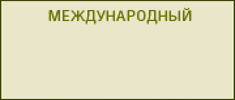List articles
|
Japan’s economy for more than two decades suffers stagnation. This is the reaction of the national
institutional system to the changing conditions in the global economy. At the time, economic model
created in Japan was dramatically different from the Western ones, this is due to national traditions
and historical background of the country. In the article the author compares the characteristics of
the Japanese model with its Western analogues on the most important features. Institutional features
of the economic activity in Japan in the past were the driving forces of the «economic miracle» and
formation of the innovative economy. However, the evolving process of globalization has led to
dramatic changes in the economic environment, and high adaptive qualities of the Japanese model
ceased to work. The reforms undertaken by the government of Japan, aimed at creating the new
model of national economy, different from that which was created during the catch-up development
period in the history of the country. The article highlights the main directions of modernization of
the Japanese economy, the basic parts of the New strategy of economic growth generated by the
government. Significant changes occur in relation to the more openness of the economy towards
greater foreign business presence in domestic markets of the country.
Continue...
|
|
|
№ 4(58)
31 august 2016 year
Rubric: Сompetitiveness of the personnel Authors: Baranova I., Putilov A. |
Ensuring a high level of education funding is an important priority for the development of innovative
economy. This article is about a new financial instrument, which is called Income Share Agreement
(ISA).
According to ISA the investor transferring funds to an individual in exchange for a fixed percentage
of his/her future income for a fixed period of time. ISA is an alternative to the traditional student
loan. Unlike the loan, students may pay more or less than the amount financed or even not to repay
at all. A payment would depend on their salary after education. ISA provides strong protection for
the students, because the part of risk transfers from the student to investors. The investor diversifies
his risk building investment ISA-portfolio. Moreover investors have strong incentives to support the
students via advising, mentoring and to help them to build career. He can lose a bit of funds in some
ISA-projects, but more often he will hit a jackpot. This article discusses some of the most significant
ISA-projects: MyRichUncle, Lumni, IBR Swap, 13th Avenue Funding and et al. These ISA-projects
have different types of financial models, but all of them are referred to Income Share Contracts.
We compare the current debt model and income-based alternatives, which has both advantages
and disadvantages.
Continue...
|
| The main objective of research was analysis of fitness market in Russian for definition dominant trends in industry in the country; to forecast of market future; to indentify the main problems of fitness; to field of competition activity of the organizations and in results of this analysis to make recommendations for service providers in the market. Fore that objectives were analyzed: history of development of fitness in Russia and abroad; position of the industry in different countries and Russia in our time; the main problems affecting suppliers and consumers in the provision of services in the country, identified by dint of own observations while working in the industry and by evaluating different sources of information, such as articles in newspapers and magazines, interview various experts, research affecting the industry in science magazines and journals; scientific works of different authors, affecting both the fitness industry, and marketing services in general. The thus-obtained information allowed to predict the near future fitness in the country and to identify the steps, the adoption of which is necessary for the further development of the industry. As a result of research concluded that in general the country is taken insufficient action on the part of market participants, which would withdraw the industry out of stagnation, note today. As a result have been proposed actions, the use of which by the supplier will contribute to further development of the sector and the involvement of a larger number of consumers. Continue... | |
|
Tourism market is considered as one of the most prospect segments of economy in the majority
of countries. Russia also has a great potential for the development of the tourism where the lodging
market is the key factor for success. At the moment one of the major problems of national accommodation
segment is low quality of hotel service that doesn’t satisfy world quality standards. The
authors of the manuscript made an analysis of the Russian lodging market that allowed evaluating
its current state. Another goal was to identify the factors influencing the problem of disconformity of
national hotel services to world quality standards. The following problem factors were found: geographically
unbalanced structure of the Russian lodging market, the prevalence of non-classified
places of accommodation, outdated hotel rooms, shortage of qualified staff, low presence of hotel
chains, as well as additional services/facilities and implemented innovations, and, finally, low availability
of hotel services for special tourist categories. The data about Russian market was compared
to the data from the US lodging market which applies the best practices in providing hotel services
of world quality standards. On the basis of the research made the authors suggested recommendations
of solving the identified problems.
Continue...
|
|
|
The article deals with the state of affairs in the Russian machine-building complex. Noted occurring
low product quality problems, low innovation activity, high cost of production and lack of efficiency.
In this regard, given that the Russian engineering products insufficiently competitive, and its
exports account for a small part in the country’s export value. According to the author, the financial
policy of Russia in the field of engineering formed from the standpoint of business and not from the
point of view of governance, as evidenced by the priorities of funding in the domestic mechanical
engineering given in the publication. The retrospective study of changes in the machinery of the
Irkutsk region, beginning with the 1990s. It is shown that during the analyzed period, the industry
has suffered significant losses. It was determined that in the field of machine-building complex of
the number of survivors have formed three main groups of companies: successfully fit into the current
realities of the market and confident working; resist in difficult market conditions and steadily
increasing production; repeatedly cut production, with few prospects of recovery from the crisis.
Named the main obstacles to improving the competitiveness of the Russian mechanical engineering
as a whole and the Irkutsk region in particular — a high degree of depreciation of fixed assets, low
productivity, high material and energy intensity, lack of modern equipment, inadequate staffing and
financial-economic opportunities, etc.. The author formulated proposals that will save the survivors
of the enterprise engineering and help them to work steadily — carrying out technological upgrading
of enterprises, improving the financing and development of the internal market of engineering
products. Presented are two ways to the development of machine-building complex: innovation and
energy and raw materials.
Continue...
|
|
|
The paper identifies and briefly describes the seven main stages of formation and evolution of the
Russian monopoly in the late 19th century to the present. Presents the author’s opinion about the
peculiarities of each stage, the characteristic of the unique and distinctive features of the Russian
monopoly, as in the tsarist period and centralized bureaucratic control system. Special attention
is paid to the formation of highly concentrated Russian economy tsarist period and the wide dissemination
of the syndicates. It is shown that in spite of the heterogeneity of economic structures of
the 19th and 20th centuries, particularly in the economic structure of tsarist Russia were the basis
on which later, in a socialist economic system, formed monopoly economy of Soviet Russia of the
twentieth century, built according to the «national economy — one single factory. Defined special
types of monopolies formed in different historical conditions of economic development of Russia.
Continue...
|



